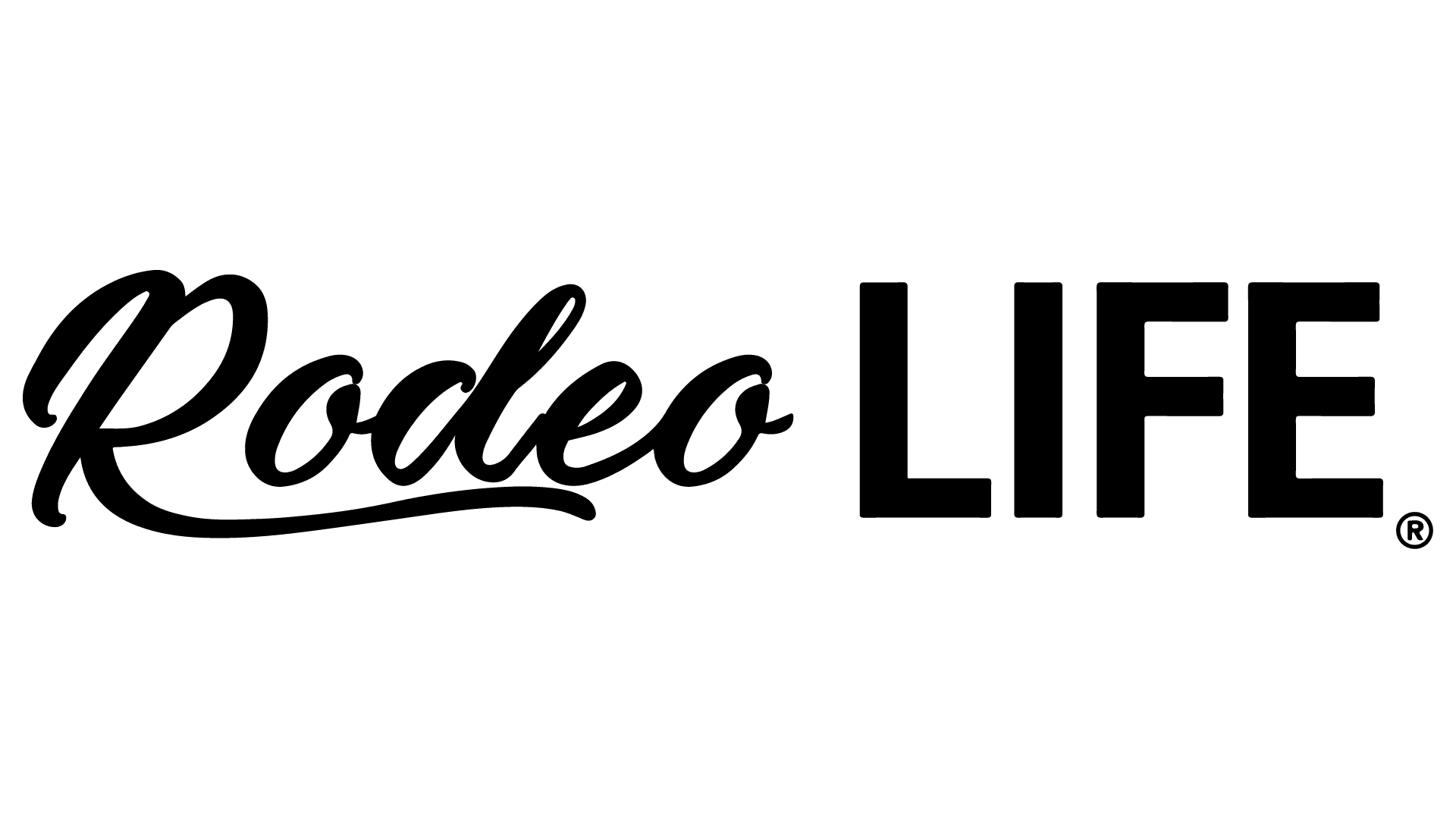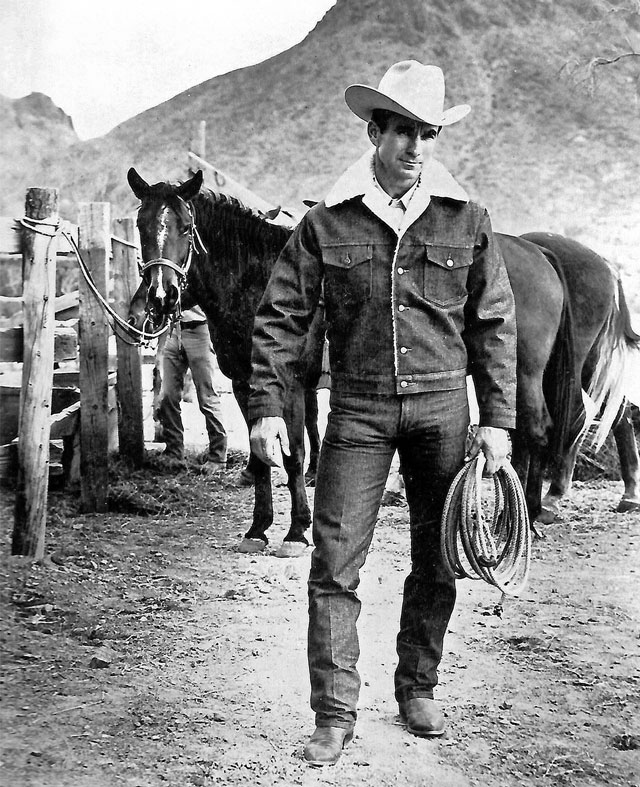story by Steve Alexander, Blaine County Journal; PRCA, and Siri Stevens
Bob Ragsdale was an all-around Montana cowboy, competing in steer wrestling, as well as calf roping and team roping. He qualified for the National Finals Rodeo on 22 separate occasions. Bob never won a world title, but his impact on rodeo has been profound.
He was the Montana High School All-Around Champion in 1956, and became an official member of the PRCA in 1961. He was one of only six left-handed tie-down ropers to qualify for the NFR, and he did so for 15 consecutive years from 1961-75. In that 15-year span, he finished as high as fourth in the world, and never lower than ninth. He competed at the NFR in steer wrestling five times, with two qualifications in team roping as well. Bob earned nine Top 10 finishes at the NFR in the all-around, including a second-place standing in 1972. He continued his support of rodeo by serving as the Vice President (1971-72) and President (1973-75) of the Rodeo Cowboys Association, and is credited as the one to propose the association include “Professional” to the organization’s formal title in 1975. – courtesy of PRCA
Bob was born October 23, 1936 in Harlem, Montana. His father, Slim, always had horses and the family split their time between farming and living in town. “Wherever we were living dad would have horses and they would wander from north of Harlem to the Canadian border.” Bob’s mom told a story about a man coming to the house to see if Bob would round up some horses for him. When the man was introduced to Bob, and saw that he was just a little kid, the man said, “those horses are big,” to which Bob replied, “I’ll take a big rope.”
Bob competed in the Montana High School rodeo. “Back then there was no divisional or regional rodeos, you went to state for a tournament that anyone could enter so long as you preregistered. I won Montana All Around and went on to the high school Nationals in Reno. I placed in a couple of events, but no wins.”
In October, right out of high school, Bob went to the Toots Mansfield Roping School in Texas. “He was a great guy; he showed me how to ‘flank’ a calf. At the time most professional ropers were legging calves. That immediately took a couple of seconds off my time.” To cover the expenses of getting to Texas and paying for the roping school Bob and his dad went to the bank in Harlem and borrowed $300 for the month-long school.
Bob met his wife, Ree, through high school. “We both went to the high school rodeos.” Ree and Bob married in December 29, 1956, after he completed the roping school and returned to Montana. “It was a pretty busy year.” He worked in the oil fields in the winter and that next summer, in 1957, went back into rodeo, working in Yellowstone Park and the following summer at the Cody Night Rodeo. “It was a rodeo,” Bob said, “but it was really a tourist show. We would work maintenance on the grounds for half the day, then do the rodeo show. They were looking for a calf roper, bulldogger and bareback bronc rider. That was 1957 and it was the last time I ever got on rough stock in the rodeo.”
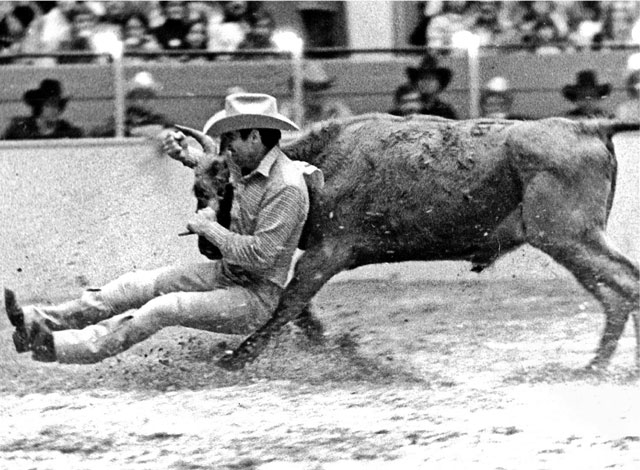
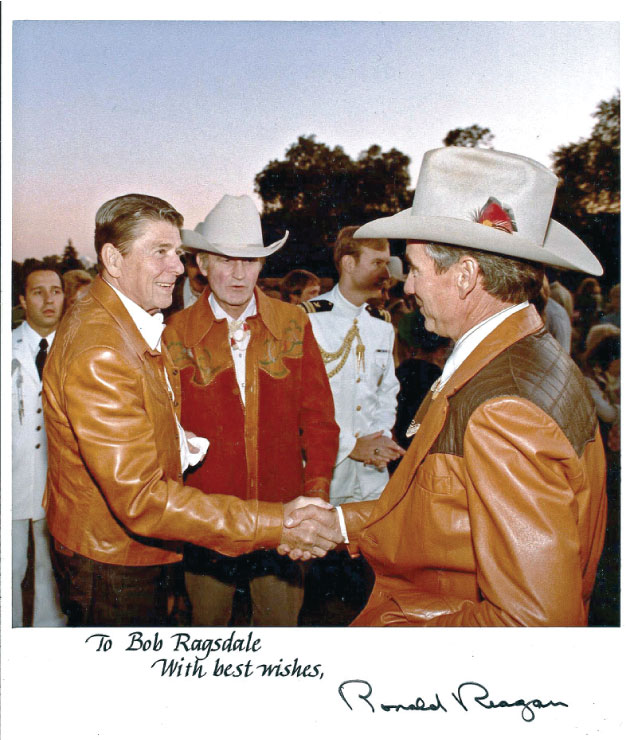
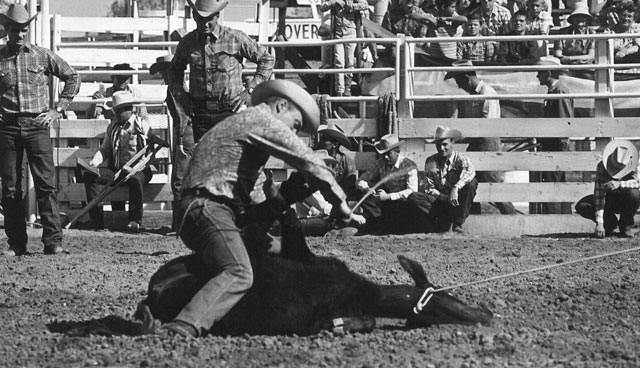
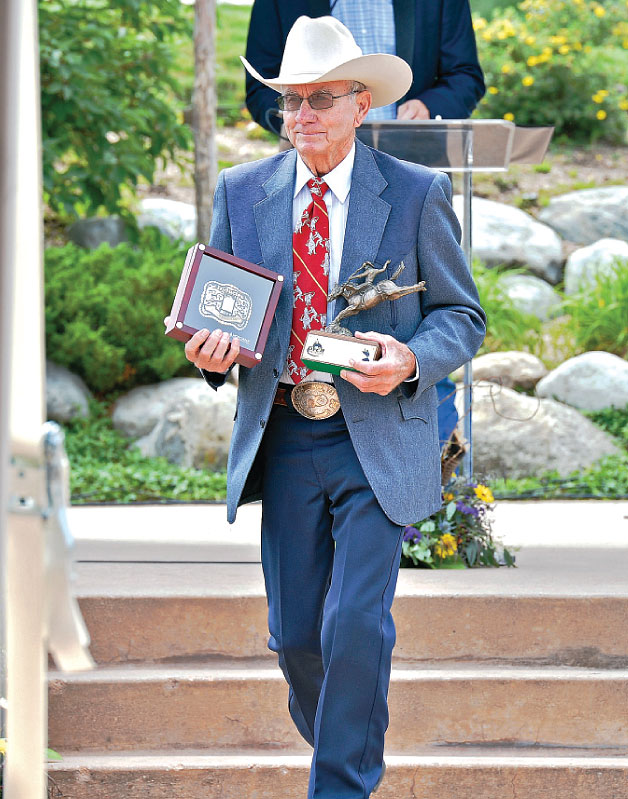
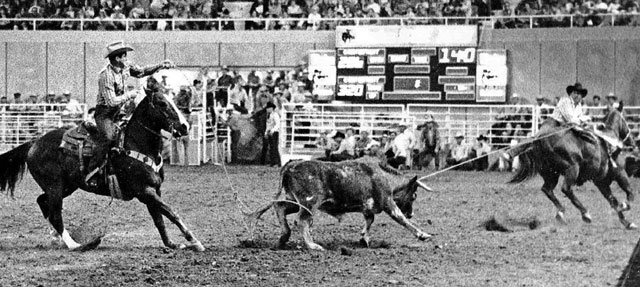
In 1958 the couple welcomed twin girls, Cathy and Cindy; then another girl, Jamie, in 1961.
“With plans to ‘fill my permit’ with the RCA (becoming a member of the Rodeo Cowboys Association, later the PRCA) at the end of the rodeo season in 1961,” Bob said, “I won big at a rodeo in Caldwell, Idaho. The RCA representative for that region was waiting for me and said, “You had better have your permit before you show up at the next RCA rodeo.” Members of the RCA resented non-members winning and reducing members’ chances to go to the year-end national rodeo.”
He moved his family to Chowchilla, California, in 1961 at the invitation of a farmer/rancher who also was a roper. “Dan Branco had a place where we could keep horses and practice roping.” They saved enough money rodeoing to buy a place there and that was home until just a few years ago when they retired. They now spend winters in Bakersfield, California and summers at their place in Landusky, Montana.
Beginning in 1961, for the next fifteen years, Bob made his living roping calves, steer wrestling and team roping. “I followed the money to choose rodeos. In the 1960-70’s I’d go to 90-100 rodeos a year. If I got into a slump I’d do a small rodeo to earn some money and get back on the RCA (PRCA) tour for the bigger rodeos.” He drove a station wagon and it was equipped with a grub box. “We’d camp out – the twins were small enough they could sleep in the front seat and Ree and I slept in the back.”
Because Bob roped left handed, he had to have horses that were comfortable seeing the rope on their left side. “A horse could be startled if it wasn’t used to a left-handed roper, which meant I had to have my own horse, sometimes more than one horse to keep up with the rodeo schedule.” He said often Ree and the kids would be driving one rig, pulling a horse trailer toward an upcoming rodeo, and he would be pulling a different horse to another rodeo on his schedule.
He not only competed, he gave back to the industry through his service as an office holder and active volunteer in a number of rodeo associated groups and as a spokesperson for rodeo. After that, he continued competing in the National Senior Pro Rodeo Association, winning three All Around titles, four calf roping titles and one ribbon roping title.
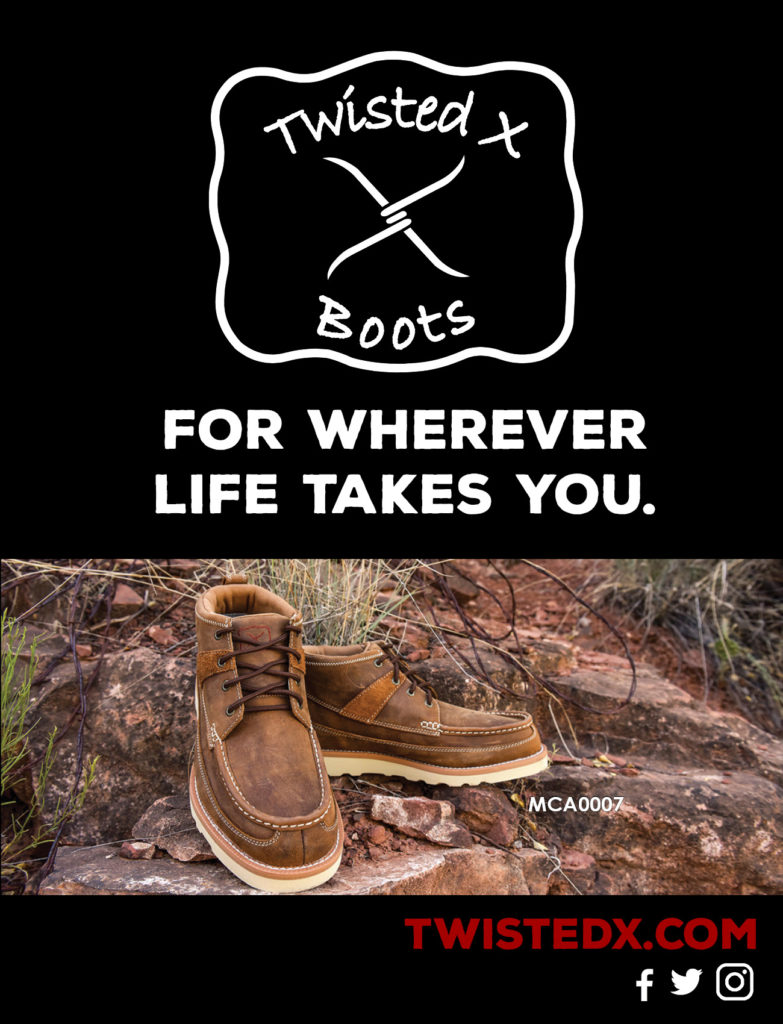
In 1983 Mac Baldrige, the U.S. Secretary of Commerce under President Ronald Reagan, organized an ‘exhibition’ rodeo for the President and selected guests. He asked Bob to rope in the exhibition which was staged in an arena just outside Washington, DC. Bob also helped create Friends of Rodeo (FoR), a non-partisan group that responded to animal rights issues. “Through FoR we did a better job of telling our side to the media and even instituted ‘chute tours’ so critics and media personnel could see reality about animal treatment.” Bob served as President of FoR and was on governing boards of several other rodeo related organizations, including the Senior Pro Rodeo executive board, during the 1990’s.
From 1973 to 1981 Bob worked for Sears as a consultant for the company’s western wear brand of clothing. “There were several professional cowboys interviewed and I was chosen to help Sears with their western wear line of clothing.” He described his role as “helping Sears clothing buyers and designers meet with rodeo fans and cowboys to see what kinds of clothing they were wearing or would like to see available. I even went to some of the markets with the Sears buyers to help choose the clothing for the next year’s catalog.” Bob often was photographed in Sears western wear for their catalogs and in 1973 was on the cover of the annual western wear catalog.
In the last two decades he’s been recognized with a number of inductions into rodeo related organizations: the St. Paul Rodeo Hall of Fame, St. Paul, Oregon (2001); the Senior Pro Rodeo Hall of Fame (2001); the National Cowboy and Western Heritage Museum in Oklahoma City (2003) and The Montana Pro Rodeo Hall and Wall of Fame in Billings. His latest accomplishment happened a few weeks ago in Colorado Springs, where he was inducted into the PRCA ProRodeo Hall of Fame. “It was a great event. I had no idea what to expect – I’ve never been to one before. This was the best one – it was developed by the professional cowboy.”
Bob and Ree saw the world through his rodeo career. Cathy Watkins, one of their twin daughters remembers going to Hawaii with her parents as a result of Bob’s rodeo career. “After Denny (Cathy’s husband and a professional team roper) and I were married we were visiting mom and dad and a guy drove up into the yard. He was from Hawaii and wanted dad to come to Hawaii and teach a roping school. We all went to Hawaii and while dad taught ropers the rest of us were treated to the sites of the islands. I think it was at that point I realized just how special my dad’s role was in rodeo-he was known all over the world. My sisters and I got to see a lot of things and meet a lot of interesting people because of his career choice.” As to interesting people, Cathy told about meeting a fellow teenager she and her sister met while traveling with their dad. The teenager played the guitar and the girls all sang together. The guitar player was Reba McEntire, whose dad and older brother were both accomplished ropers. “Of course none of us kids, at that time, had any idea of how Reba would develop into a famous singer and actress.”
For Bob, the biggest change in rodeo is in the rodeo competitors and the amount of money they make. “When I first got into professional rodeo, most of us were cowboys. The competitors now are truly athletes, devoting their lives to the sport and continually doing things to improve their ability to compete.” In the old days, “We often had to work other jobs between rodeos to keep our families going.”
And the winnings have increased. “When I was RCA All Around runner up at the NFR in 1972, I think first place for All Around paid about $40,000. That number now is in the neighborhood of $300,000-400,000.
“Whatever I’ve been able to accomplish has been through rodeo. I tore my knee up in 1976, and started looking for other things to do. But I had put enough away and then I got into the construction business. Everything I was able to do was because of rodeo.”
